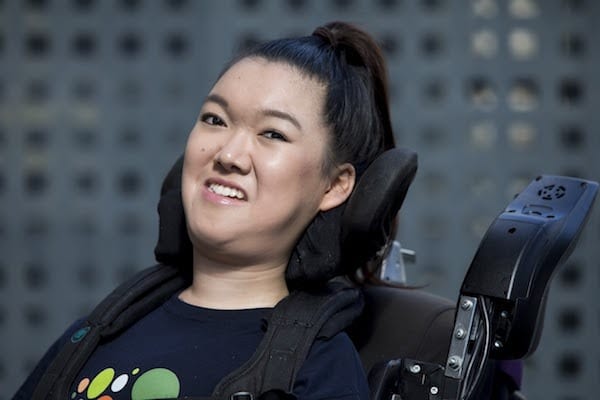Nothing could have possibly prepared me for the weight that came with the word disability. The most difficult part of living with a disability is the fact that we are expected to fit into an environment that was not built for us. It was not built to be inclusive.
I’ve heard many conversations about inclusion and have been fortunate to witness many initiatives around the world promoting the importance of this. While it is important for us to acknowledge that we need to build a more inclusive society, both socially and culturally; we seem to have forgotten to take a step back to look at the basics. How can we possibly be inclusive if the environment we live in is not accessible in the first place?
Having an environment that is accessible and inclusive is the prerequisite that leads to opportunities and an equal chance for all people to participate and contribute. I can only begin to imagine how many opportunities have been missed, how much talent has gone undiscovered – simply because the environment we exist in, is not built for inclusion.
To me, inclusion goes far beyond disability. It’s about how we find pride in who we are and embrace the unique perspective and talent every individual has to offer.
I, myself, have been fighting to adapt to this inaccessible environment, as a woman living with a disability. In the context of the global #MeToo movement, I was asked whether there was ever a time I felt discriminated against because I am a woman. I confidentially answered no. However, as I let that thought sink in, I began to challenge my own response – have I really never been discriminated against as a woman, or is my identity as a woman overpowered by the fact that I am in a wheelchair?
The environment that surrounds us is constantly evolving, but it sometimes feels as if an entire population is getting left behind because inclusion was not, and still is not, naturally embraced as a core principle of design.
Although it is a challenge to navigate through this, I am fortunate to be surrounded by a network of people who not only support and guide me through this journey as I strive for a successful career, but also see me for who I am. Through them I have learned that having a disability is not a burden, in fact, it can be used as a catalyst to find my greatest strengths. I have learnt that the challenges I face aren’t necessarily negative, because they force me to be creative and innovative – and that itself, opens the door to possibilities I could not even imagine. Most importantly, I have learnt to leverage my unique perspective to create more opportunities for myself and others around me.
For this very reason, I’m fortunate to have had the opportunity to build a career as a speaker and social entrepreneur and use this as a platform to create positive social change through the power of design. My work as a User Experience (UX) Designer with AbilityMade and Hireup is driven by innovation – both these social enterprises are using technology as a driving force to create ground-breaking initiatives in the disability sector. In my eyes, there is a powerful common ground across these two initiatives – and that is creating opportunities for people with disability. Opportunities that acknowledge everyone has something unique to offer and creating platforms to enable this.
Imagine…just imagine…if we had an equal chance to participate and contribute to our community. It would mean we are creating opportunities for the one billion people living with a disability around the world to use their experience as a force of innovation.
Monday the 3rd December marks International Day of People with Disability, where we acknowledge what we’ve achieved and reflect on the opportunities we’ve missed because we have yet to fully embrace inclusion. And I dare say this vision will not be achieved until we realise it is up to us to make it a reality. I challenge you to think about what you can do in your everyday life, to ensure that inclusion remains at the heart of what we see, what we do, and who we are.

